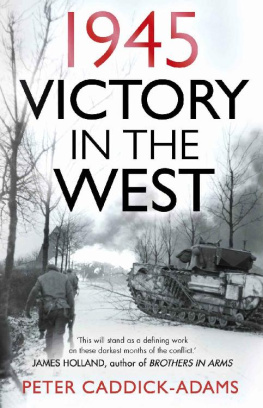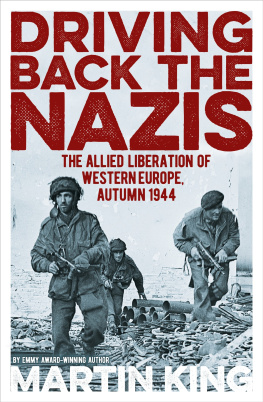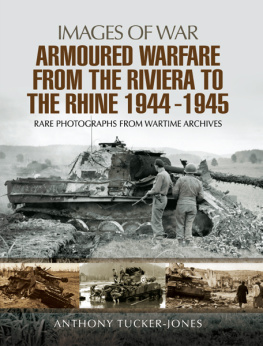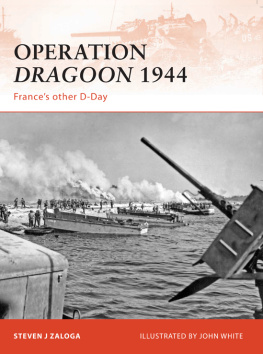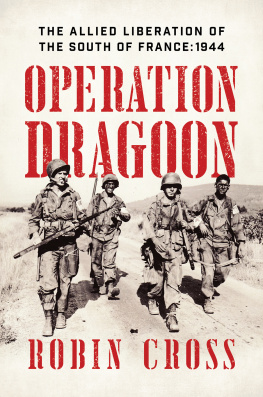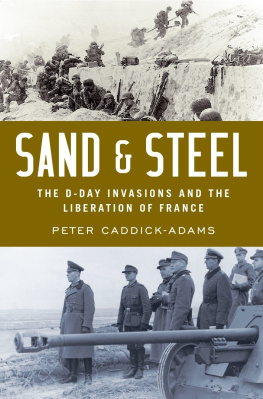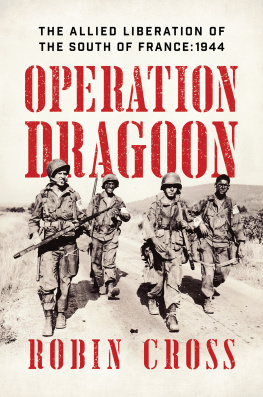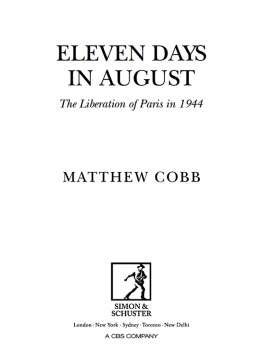Peter Caddick-Adams is a writer and broadcaster who specialises in military history, defence and security issues. He previously lectured in Military and Security Studies at the UK Defence Academy for twenty years, and in Air Power for the Royal Air Force. A Fellow of the Royal Historical Society and the Royal Geographical Society, he also spent thirty-five years as an officer in the UK Regular and Reserve Forces, and has extensive experience of various war zones, including the Balkans, Iraq and Afghanistan. He was educated at Shrewsbury School, Sandhurst and Wolverhampton University, where he gained first class honours in War Studies; he received his PhD from Cranfield University. His previous works include Monty and Rommel: Parallel Lives (2011), Monte Cassino: Ten Armies in Hell (2012), and Snow and Steel: Battle of the Bulge 194445 (2014).
Ia | German chief of staff/chief operations officer |
Ib | German chief quartermaster/supply staff officer |
Ic | German chief intelligence staff officer |
I Corps (British) | Lieutenant General Sir John Crockers 1st Corps (British Second Army) |
III Flak-Corps | General der Flakartillerie Wolfgang Pickerts 3rd Anti-Aircraft Corps (Luftwaffe) |
4th/7th Royal Dragoon Guards | British tank battalion |
V Corps (US) | Major General Leonard T. Gerows 5th Corps (US First Army) |
| US six-wheeled truck, usually a two-and-a-half ton Jimmy |
VII Corps (US) | Major General J. Lawton Collins 7th Corps (US First Army) |
13th/18th Royal Hussars | British tank battalion |
LXXXIV Corps | General Erich Marcks 84th Armeekorps, HQ in Saint-L |
88mm | German anti-tank/anti-aircraft gun; term widely used to mean hostile artillery |
105mm | US field howitzer, towed or mounted in the M7 Priest. It had a max range of twelve thousand yards |
A-20 | Douglas Havoc twin-engined light bomber and fighter (the Boston in RAF service) |
A-26 | Douglas Invader twin-engined light bomber and ground attack aircraft |
AAA | Anti-Aircraft Artillery |
Abwehr | German military intelligence service |
Achilles | British M10 tank destroyer equipped with 17-pounder anti-tank gun |
Albany | D-Day paratroop drop of US 101st Airborne Division into Normandy |
All American | Major General Matthew B. Ridgeways 82nd Airborne Division |
APA | Attack Transport US Navy ship fitted with large davits to handle landing craft |
ARC | American Red Cross, which manned Clubmobiles and the Rainbow Corner |
Arcadia | Washington Conference of 22 December 194114 January 1942, which established the CCS |
Argonaut | Washington Conference of 2025 June 1942, which postponed Channel invasion |
Army Group B | German forces north of the River Loire, led by Erwin Rommel |
Army Group G | German forces south of the River Loire, led by Johannes Blaskowitz |
Argument | (aka Big Week) Allied air operations to destroy the Luftwaffe, 2025 February 1944 |
AS | Arme Secrte (Gaullist Resistance) |
ATS | Auxiliary Territorial Service (193849), British all-female land force of WW2 |
Avalanche | Anglo-American amphibious assault at Salerno, 916 September 1943 |
AVRE | Armoured Vehicle Royal Engineers; specialist engineer tank based on the Churchill |
AWOL | Absent without Leave, a severe military offence |
B-17 | US four-engined Boeing Flying Fortress heavy bomber |
B-24 | US four-engined Consolidated Liberator heavy bomber |
B-25 | US twin-engined North American Mitchell medium bomber |
B-26 | US twin-engined Martin Marauder medium bomber |
Bagration | Huge Soviet land operation, launched on 22 June 1944 in Belorussia, to complement Overlord |
Bailey bridge | British-designed combat bridge made of man-portable, pre-fabricated parts |
Band | Code name for Normandy invasion beaches east of the River Orne (not used) |
Bangalore torpedo | Lengths of explosive-filled pipe, used to destroy barbed-wire entanglements |
Battalion | Single-arm unit of 500 to a thousand men, commanded by a lieutenant colonel or major |
battery | Artillery unit of company size, usually of between four and eight guns |
BCRA | Bureau Central de Renseignements et dAction; Gaullist intelligence service |
Beetle | Nickname for Walter Bedell Smith, SHAEF chief of staff |
Big Drum | D-Day radar jamming deception operation on the West flank of Overlord, off Utah |
Big Week | see Argument |
BIGOT | Highest level of secrecy for Overlord |
Big Red One | Major General Clarence R. Huebners US 1st Infantry Division |
Black Watch | Kilted Highland battalions of infantry, Scottish in origin |
Bletchley Park | Allied code-breaking centre in Buckinghamshire, UK |
Blue and Gray | US 29th Division, nicknamed because it recruited from both former Union (blue) and Confederate (grey) states |
bocage | High earth banks and thick hedgerows that lined many Normandy fields |
Bodyguard | Series of deception operations to distract German attention from Normandy |
Bolero | Code name for build-up of US ground and air forces in UK, 19423 |
Boston | D-Day paratroop drop of US 82nd Airborne Division into Normandy |
Brad | Nickname for General Omar Nelson Bradley |
Brigade | Anglo-Canadian equivalent of a combat regiment, made up of around two to three thousand men |



